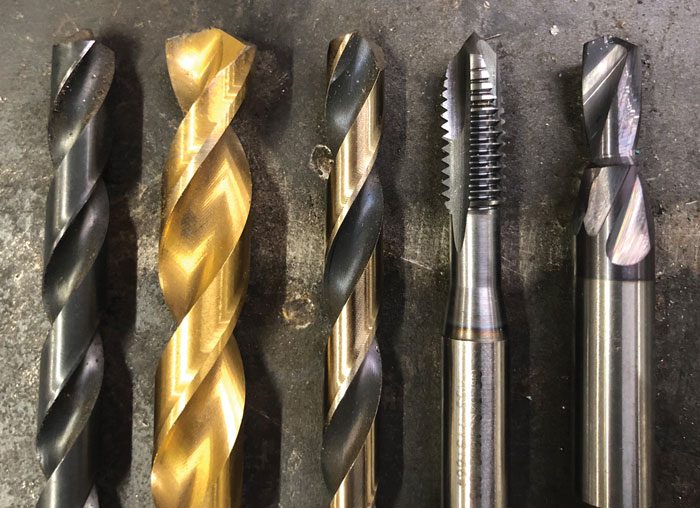Do you consider coatings when shopping for drill bits and taps?
Tool coatings are selected to prevent the material from sticking to its surface. For farriers, this is most commonly a problem in aluminum shoes.
The two most common coatings you’ll see while walking down the tool aisle are oxide, which is black, and titanium nitride (TiN), which is gold. The cheaper oxide coatings are virtually useless and wear off the cutting edge almost immediately. Good quality oxide coatings are porous, allowing them to hold and carry cutting lubricant better than an uncoated surface. They prevent galling and BUE but they are the softest of the coatings. They are also the cheapest.
TiN is a clear step up from even high-quality oxide coating. It’s around 20% harder and is significantly smoother and resistant to BUE. In industrial applications, though, it’s typically only seen on tools meant for use in aluminum since the demands are lower and higher-grade coatings are used on tools meant for use in steel and exotic alloys. Still, for farriers, the additional cost of TiN-coated tools over uncoated or oxide-coated tools is money well spent as the coating can significantly increase the life of the tools. In our tests, we found that TiN-coated tools lasted over twice as long as oxide-coated tools.
My recommended coating for taps for farriers is titanium carbonitride (TiCN). This coating is close in price to TiN, but is harder (3000 vickers/87 Hrc vs. 2300 vickers/81 Hrc) and has a lower coefficient of friction (.45 vs .65) than TiN. For farriers tapping by hand or using impact guns, that lower coefficient of friction is critical to being able to quickly get shoes tapped and minimize broken taps. The hardness means you get more for your money and fewer taps to stock.
Learn More
Gain more insight from Ryen Carlson on how “Tool Coatings Can Boost or Hinder Your Hoof-Care Business” in the April 2022 issue of American Farriers Journal.








